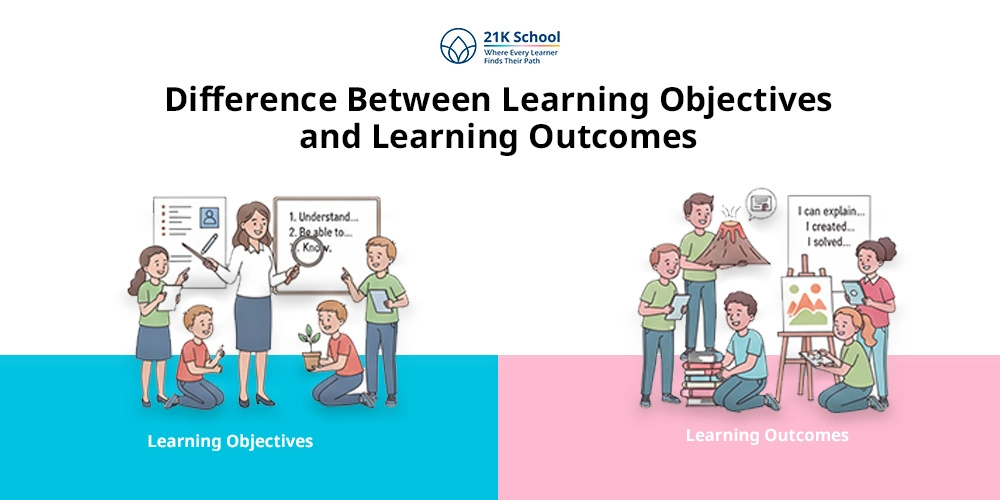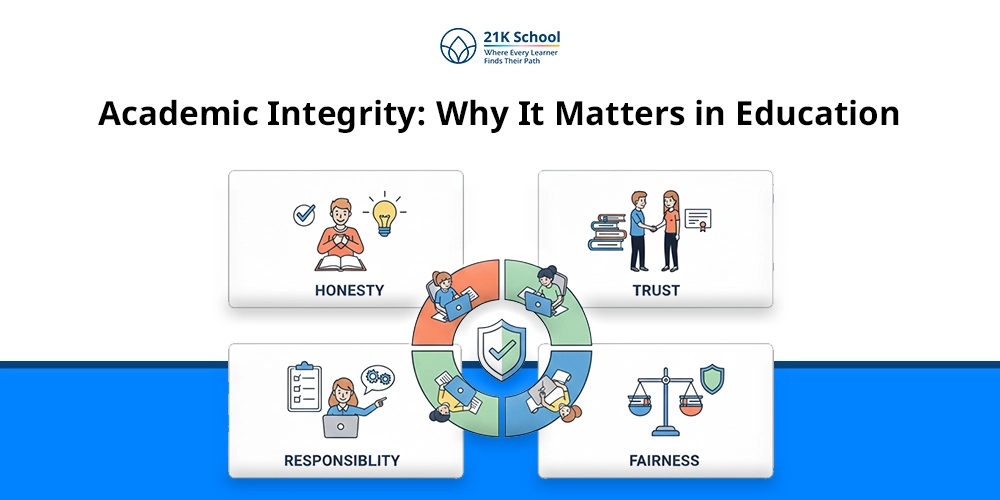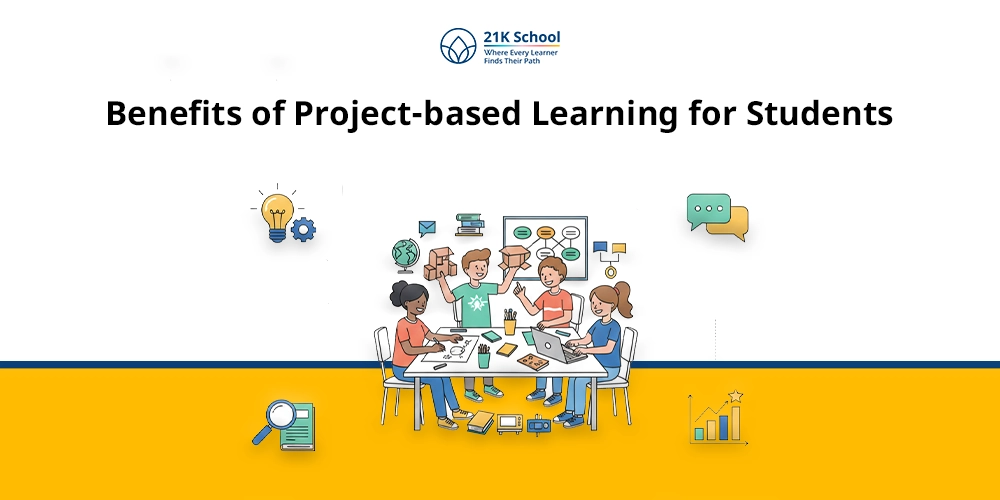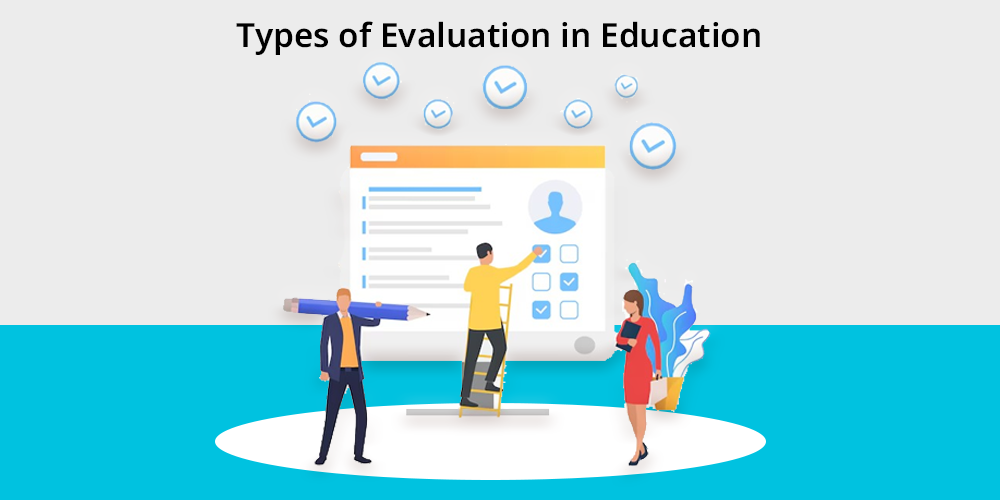
Evaluation is an integral part of effective teaching and learning. It helps educators determine the level of learning being retained by the students, areas for improvement, and what instruction to implement.
Evaluation assists students with the awareness of their learning, helping to develop ownership through active participation.
The type of evaluation we choose to use impacts the level of balance in the student-centred learning environment.
Table of Contents
What Are Educational Evaluations?
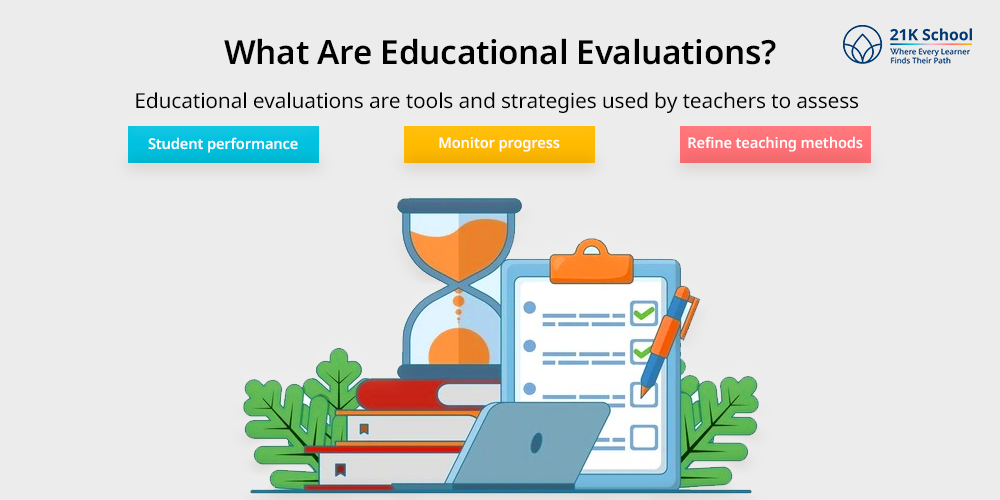
Educational evaluations are tools and strategies used by teachers to assess student performance, monitor progress, and refine teaching methods.
These evaluations are not just limited to exams; they include a range of formal and informal practices that help in understanding how students learn and grow.
The goal of evaluation in education is not only to measure academic achievement but also to support continuous learning, guide instruction, and ensure learning goals are met effectively.
Types of Evaluation in Education
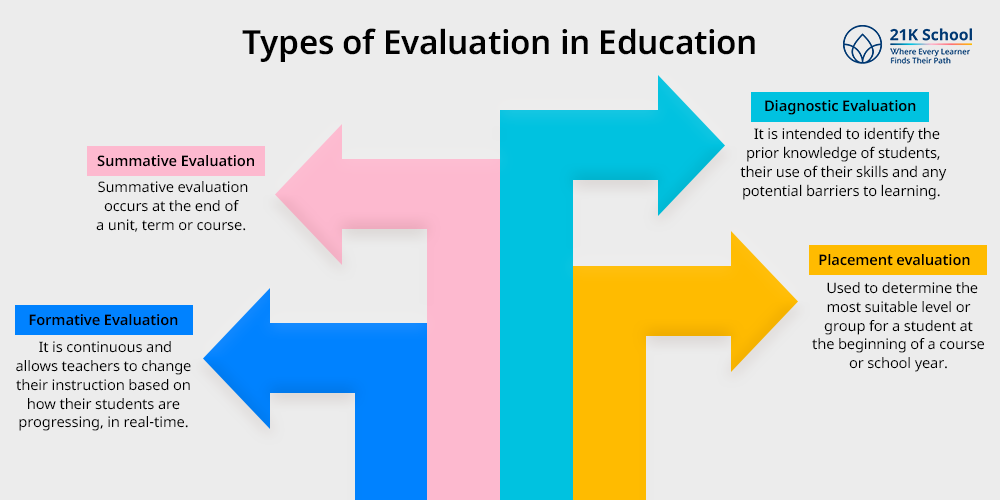
There are many kinds of evaluation, and each has a specific purpose and will be used at different intervals in the teaching-learning process.
1. Formative Evaluation
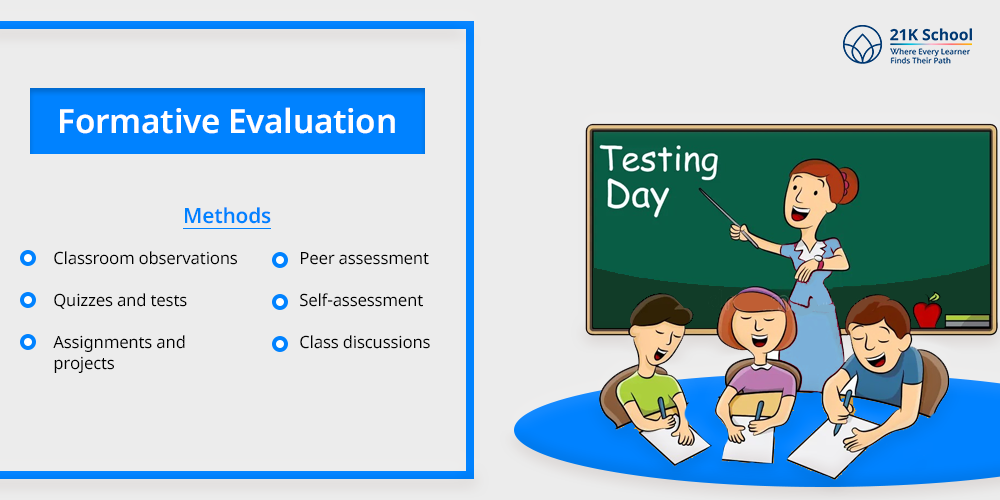
Formative evaluation occurs during the learning process. It is continuous and allows teachers to change their instruction based on how their students are progressing, in real-time.
Purpose:
- Monitor a student’s learning progress during instruction.
- Identify learning gaps and misunderstandings early.
- Provide timely feedback to improve learning.
- Manage and engage student learning.
Methods:
- Classroom observations – Teachers observe student participation in lessons, group work, and content engagement.
- Quizzes and tests – Short assessments that identify understanding following the completion of a topic.
- Assignments and projects – Assessment of creative thinking, application, and problem-solving.
- Peer assessment – Students assess each other’s work, showcasing collaborative learning.
- Self-assessment – Learners reflect upon their strengths and weaknesses.
- Class discussions – In class, teachers facilitate discussions to promote student questioning and recognise understanding.
Know more about formative assessment tools
2. Summative Evaluation
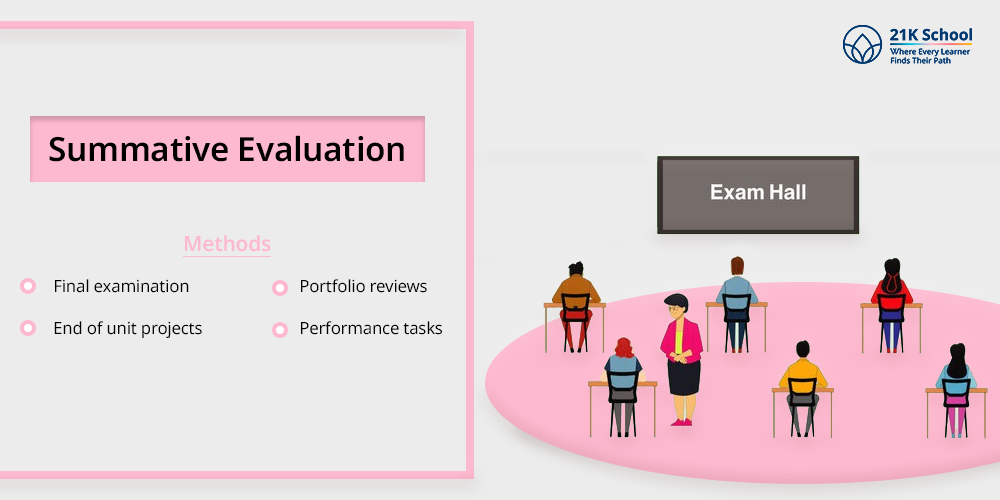
Summative evaluation occurs at the end of a unit, term or course. It provides a final measure of what students have learned.
Purpose:
- Evaluate the overall achievement of the learning objectives.
- Provide a grade or certification.
- Assess the effectiveness of the instruction and curriculum.
- Decide on promotion or graduation.
Methods:
- Final examinations – Summative tests for the entire unit, including all learning goals.
- End of unit projects – Project-based learning through larger assignments that allow students to create, instead of showing retrospective knowledge (e.g. presentations, coursework, etc.)
- Portfolio reviews – Consists of aggregated large pieces of work over time. It compares the learning in the portfolio (past and present) as a demonstration of ongoing progress and mastery of the intended learning objectives.
- Performance tasks – Actual presentations of practical application or viva voce; the student must perform actual or tactile skills.
3. Diagnostic Evaluation
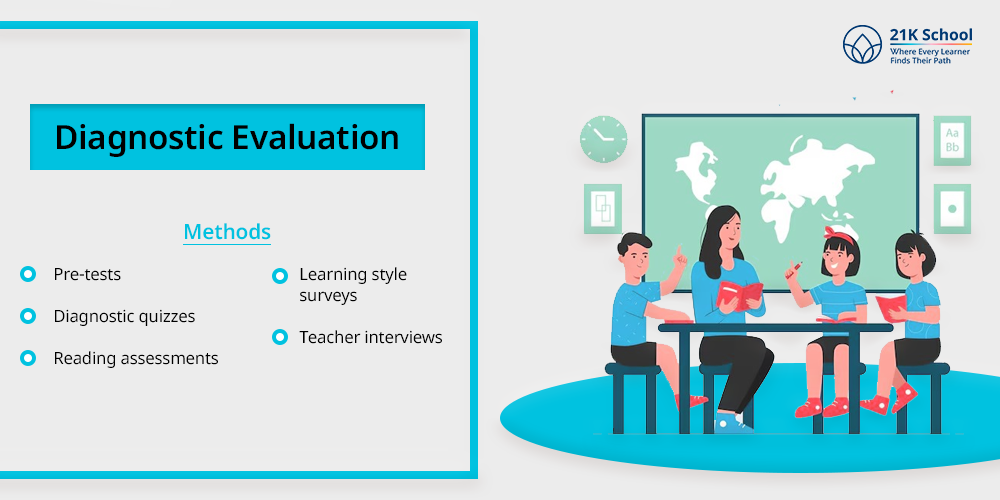
Diagnostic evaluation occurs before any instruction starts. It is intended to identify the prior knowledge of students, their use of their skills and any potential barriers to learning.
Purpose:
- Establish knowledge and skill levels already in place.
- Identify gaps in learning.
- Modify lessons to meet the specific needs of students.
- Plan differentiated learning from the get-go.
Methods:
- Pre-tests – Short tests to establish a baseline against the class average.
- Diagnostic quizzes – Short quizzes focusing on foundational concepts.
- Reading assessments – Tests that assess reading fluency and comprehension.
- Learning style surveys – Tools that help identify various learning methods.
- Teacher interviews – One-on-one interviews centred around past learning experiences or interpersonal difficulties.
4. Placement evaluation
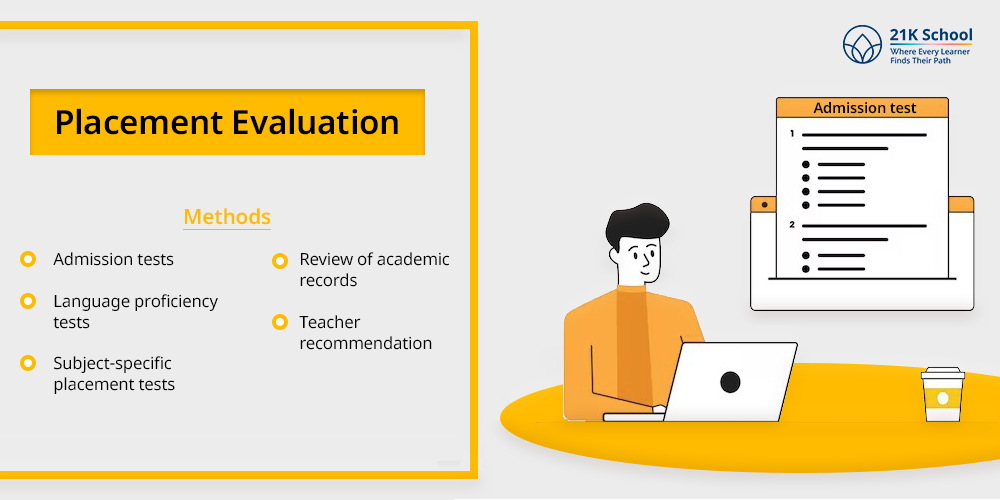
Placement evaluation is used to determine the most suitable level or group for a student at the beginning of a course or school year.
Purpose:
- Decide the right course, grade, or ability group.
- Ensure students are neither under- nor over-placed.
- Match students with programs that suit their readiness levels.
- Avoid frustration or boredom due to misplacement.
Methods:
- Admission tests – Used to assess general aptitude or readiness for a particular class.
- Language proficiency tests – Used to assess which language group the student would suit best.
- Subject-specific placement tests – Used to gauge any prior understanding/difficulty in math, science, etc.
- Review of academic records – Used to analyse his or her record as well as past performance to determine appropriate placement.
- Teacher recommendation – Based on classroom interactions and understanding of student capability.
Best Practices for Fair and Inclusive Assessment
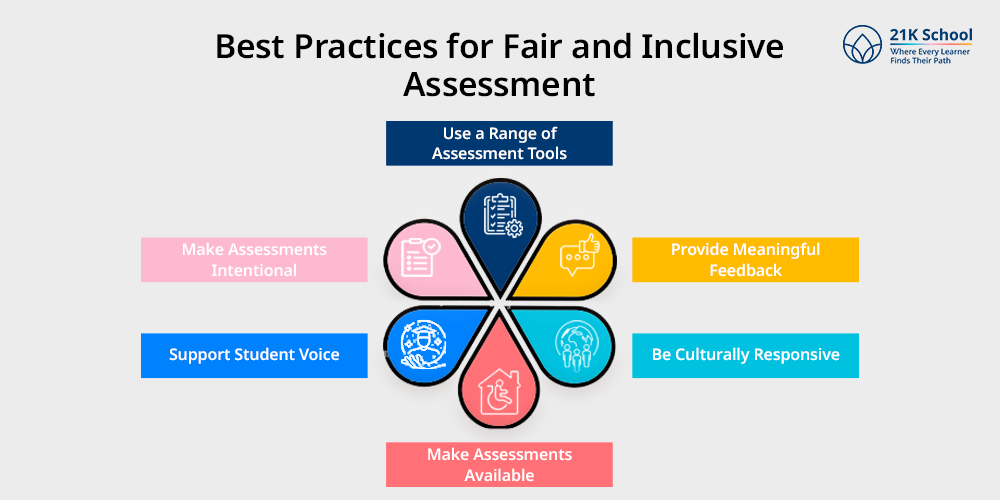
Effective evaluation is not just about testing; it’s about creating a system that supports every learner. These best practices ensure that assessments are both meaningful and inclusive:
- Use a Range of Assessment Tools: Make use of tests, projects, and activities to appeal to a variety of learners and learning processes.
- Provide Meaningful Feedback: Provide students with suggestions for improvement beyond test scores.
- Be Culturally Responsive: Avoid using examples and language that are biased or would exclude groups of people.
- Make Assessments Available: Make accommodations for students who have special needs or learning differences.
- Support Student Voice: Allow students to reflect on their learning and contribute to their evaluations.
- Make Assessments Intentional: Each assessment should have a connection to the intended learning outcomes.
Conclusion: Building a Better Evaluation System
Understanding the different types of evaluation in education helps educators create more effective, inclusive, and supportive learning environments. Each type—formative, summative, diagnostic, and placement—plays a specific role in guiding instruction and tracking progress.
By combining these methods and following best practices, schools can shift from a one-size-fits-all education approach to a system that truly meets every learner’s needs.
As modern education evolves, effective evaluation becomes the key to empowering students and enabling lifelong learning.

